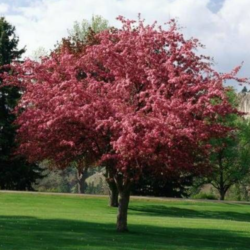Description
Key Facts:
Scientific Name: Viburnum lentago
Common Name: Nannyberry Viburnum
Family: Adoxaceae (Madder family)
Height: 12-15 feet at maturity
Spread: 8-12 feet
Leaf Color: Dark green turning red to purple in fall
Flower Color: Creamy white
Berry Color: Dark blue to black
Bloom Time: Spring
Fruit Time: Late summer to fall
Growth Habit: Dense, rounded canopy
Sunlight: Prefers full sun to partial shade
Soil Preference: Well-drained soil; adaptable to various soil types
Water Needs: Moderate; prefers consistent moisture
Uses: Garden beds, borders, specimen plant, wildlife attractant
Pest and Disease Resistance: Generally pest-free and disease-resistant
Why You Will Love Nannyberry Viburnum
Nannyberry Viburnum offers year-round interest with its attractive foliage, seasonal flowers, and colorful berries. Its dense, rounded form makes it a beautiful specimen plant or privacy screen, while its vibrant fall colors and wildlife-attracting berries add additional appeal. Adaptable to various light and soil conditions, this plant is low-maintenance and resistant to pests, making it a practical and beautiful choice for any garden. Enjoy the charm and functionality of Nannyberry Viburnum, which enhances your outdoor space with its seasonal beauty and ecological benefits.





